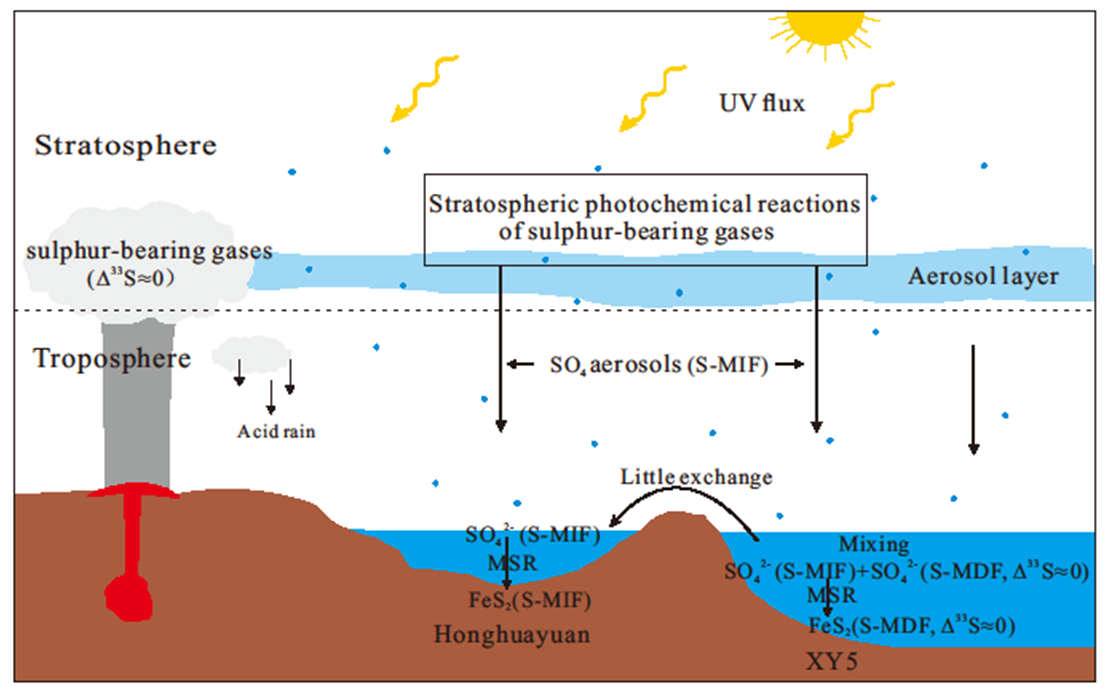Violent Volcanism Triggers The Late Ordovician Mass Extinction
The Late Ordovician mass extinction of about 445 million year ago eliminated ~85% of marine species globally. It has been ranked as the second-most severe biotic crisis in Earth’s history, with the most famous being the Cretaceous-Paleogene event that wiped out all non-avian dinosaurs about 65 million years ago. A new study led by Yanan Shen from University of Science and Technology of China of CAS provides strong sulfur isotope evidence for stratospheric volcanism during the Late Ordovician. The kill mechanisms triggered by the stratospheric volcanism include global cooling, global warming, and oceanic anoxia, ultimately causing the Late Ordovician biotic crisis.
The researchers measured four sulfur isotopes of pyrite extracted from the rocks. They found a surprising sulfur isotope signal called “mass-independent sulfur isotopic fractionation” which is unique in the rocks of 2.3 billion years ago. The team paint a picture of how stratospheric volcanic eruptions triggered global climate changes and killed marine animals of 445 million years ago.

The Late Ordovician volcanic eruptions inject large amounts of sulfur gases probably dominated by SO2 into the stratosphere of about 20 km above the ground where the UV flux is high. The subsequent photochemical reactions of the volcanogenic SO2 produce mass-independently fractionated sulfate aerosols that drastically lower the pH of rain and initially increased planetary albedo, disturbing the thermal balance of the Earth system. This would be followed by global warming, which would have resulted in the decrease of oxygen solubility and ocean ventilation, and as a result, expansion of oceanic anoxia. The team conclude that the rapid global environmental deterioration triggered by the stratospheric eruptions may have driven the Late Ordovician mass extinction.
Beyond deepening understandings of ancient mass extinction events, the findings have relevance for today. Sulfate levels in stratosphere have increased over the last 50 years which have direct effects on global climate change. High precision sulfur isotope measurements on present-day stratospheric sulfate would help our understanding of sulfate origins and their climate effects.
Back
